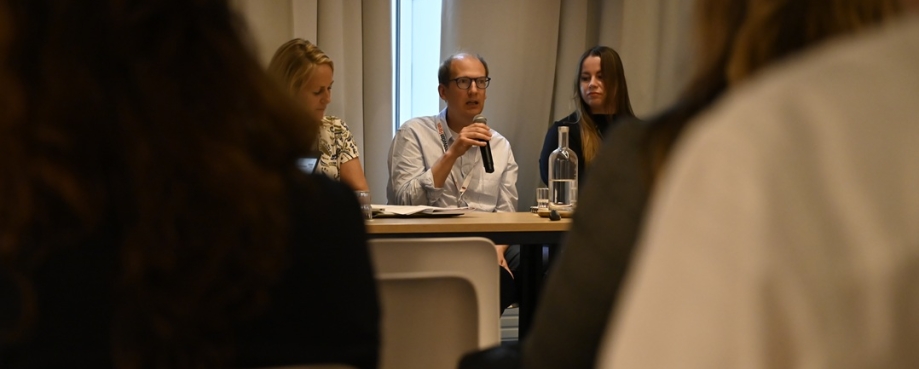
Once again, Innovation Forum pulled together a compelling two days of discussion, connection and challenge for those of us working toward a more sustainable apparel and textiles industry. IF 2025 tackled some big themes, and while the energy was hopeful, it was clear: this industry needs to rapidly accelerate towards a just transition to meet the magnitude of the current crisis.
Here are some of my key takeaways and reflections:
Climate adaptation can’t wait
Climate change ‘mitigation’ has long been on the agenda, but this year saw a welcome shift in urgency toward climate adaptation. Kudos to supplier voices who expanded the conversation by pushing this forward.
We heard powerful and urgent examples of how traditional cooling systems, built for summer temperatures in the high 30s are no longer enough. With days above 40˚C now common, and 50˚C becoming the new reality in some regions, adaptation is no longer a future issue. It needs to happen now, and drastically.
These issues are detailed in ETI’s snapshot on extreme heat risks, which explores the health, safety, and productivity impacts of rising temperatures on supply chain workers.
It was a pleasure to be on a panel with Saqib Sohail (Artistic Milliners) and Joy Roeterdink (Suit Supply) who explained, from both a supplier and a brand perspective, how long-term business relationships, open communication, trust, and a commitment to collaborative problem solving are not just “nice to have”, they’re fundamental to adaptation strategies that protect people and keep businesses resilient in an increasingly volatile climate.
Circularity is evolving – but who is doing the work?
Circular fashion was everywhere at IF 2025. Ambition is growing, and we’re seeing more and more credible business models gaining traction. But one big question kept troubling me: where are the workers in all of this?
Who is doing the work? Where are they based and what are working conditions like for them? Questions that were sadly missing from conversations focused on processes, systems, materials, and design that skipped over the people powering these initiatives.
A refreshing exception was United Repair Centre, who have built decent, skilled jobs into the heart of their circular business model. Offering proof that reducing textile waste and creating quality employment can go hand in hand. The challenge? How do we ensure other circular initiatives are similarly deliberate and determined to provide decent work?
Data, data, data (except on production volumes)
The role of data was another dominant theme: measuring progress, guiding decisions, getting C-suite buy-in. But there was a noticeable gap: production volumes.
This was thrown into stark relief by The Or Foundation who offered a sobering perspective on the 15 million second hand items - ‘dead white man’s clothes’ – arriving every week at Ghana’s Kantamanto market. Their research identified the “top” 10 brands behind the waste polluting land and seas around Accra – some names weren’t unfamiliar.
While WRAP’s work on how second hand and repair displace new consumption stood out, the broad questions remain: are burgeoning circular initiatives addressing the root issue of overproduction and over consumption? Or are we just adding layers to a flawed system with grave environmental and social impacts.
That said, one brand did mention how they’re using the planetary boundaries framework to shape sustainability strategy. More on that, I hope, in future conversations.
Who wasn’t in the room?
A lot was said about collective action to drive improvement, and rightly so. As one industry veteran put it: “there are no perfect supply chains, but there are improving supply chains”. The key question for me here is: improving for who?
Convening a space where brands, suppliers, service providers, multi-stakeholder initiatives, and NGOs can have these discussions is invaluable. But the notable absence? Workers.
Without trade unions, grassroots organisations and more civil society representation we risk conversations that lack the accountability and diversity of perspective needed to challenge assumptions cultivate brave collaborations and drive real change.
Resources like the STITCH Partnership’s MSE Framework offer valuable guidance on how to meaningfully engage workers and affected communities as part of a human rights due diligence approach. It was heartening to hear ‘just transition’ woven through the agenda, but at its very core, just transition demands inclusion. For the apparel and textiles industry this means centring workers in these conversations. Not speaking about them in the abstract, because they are the people upon whom the future of this multi-billion-dollar industry depends.
Final thoughts
IF 2025 captured the sense of urgency and possibility that defines this moment in the apparel and textiles industry. But transition without equity won’t cut it.
To truly transform the industry, we need adaptation and accountability, circularity that offers decent jobs, and collective action that includes every voice - especially the most important ones.
Let’s make sure the next stage of the journey brings everyone to the table.
